DSLR Imaging: Sculptor Galaxy, IC405 Nebula,
Blue Snowball Planetary Nebula
Posted: 24 November 2016
|
Open: Wednesday, 23 November 2016, 1809 MST Temperature: 70°F |
Session: 1047 Conditions: Mostly clear |
Equipment Used:
12" f/8 LX600 w/StarLock
Wired AutoStar II handset
2" 24mm UWA eyepiece
Camera:
D7200 DSLR
1815 MST: LX600 ON, StarLock OFF, High Precision OFF.
1817 MST: viewed the planet Venus, 102X.
Then began preparing for the night's Deep Sky Object (DSO) imaging with the D7200 DSLR. Slewed to NGC253 (Sculptor Galaxy), which would be the first target after the end of Astronomical Twilight (1846 MST). Viewed it at 102X. 1846 MST: decided to let NGC253 get a little higher in the sky before imaging it.
1900 MST: mounted the D7200 DSLR at prime focus + focal reducer. The galaxy was easily seen in the camera viewfinder, allowing me to rotate the camera body for the best framing. 1920 MST: slewed to the star Fomalhaut and focused with the mask. Locked the mirror using the bolt add-on.
1925 MST: returned to NGC253 (Sculptor Galaxy). StarLock ON. Began imaging. I did several exposures to test individual high ISO images vs stacked low ISO images. The results are shown here. All images were taken using a White Balance of 4000K.
1 minute, ISO 6400

5 minutes, ISO 6400
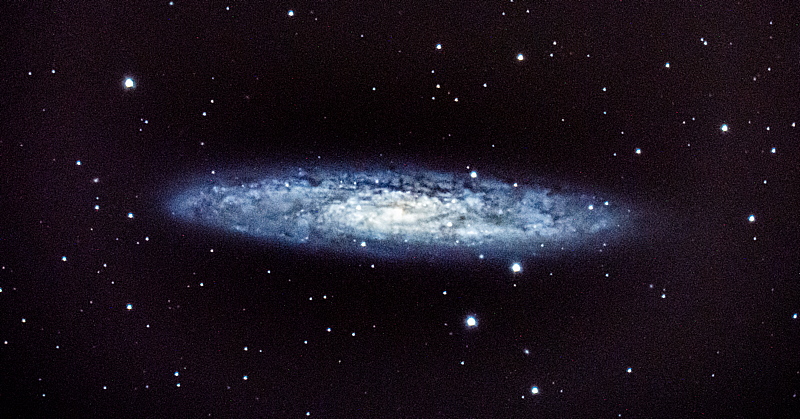
I then did 12 exposures of 2 minutes, ISO 800. Two images captured a jet airliner:

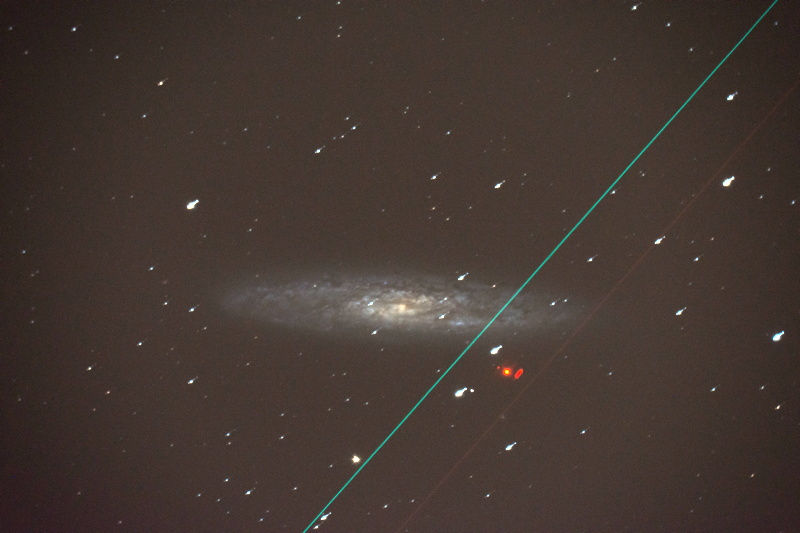
The second image shows that the StarLock autoguiding was disturbed by the passing plane.
I selected the best 6 images for stacking for an effective exposure of 12 minutes, ISO 800. Here are the results using two different image stacking applications:
Edited single image, 2 minutes, ISO 800
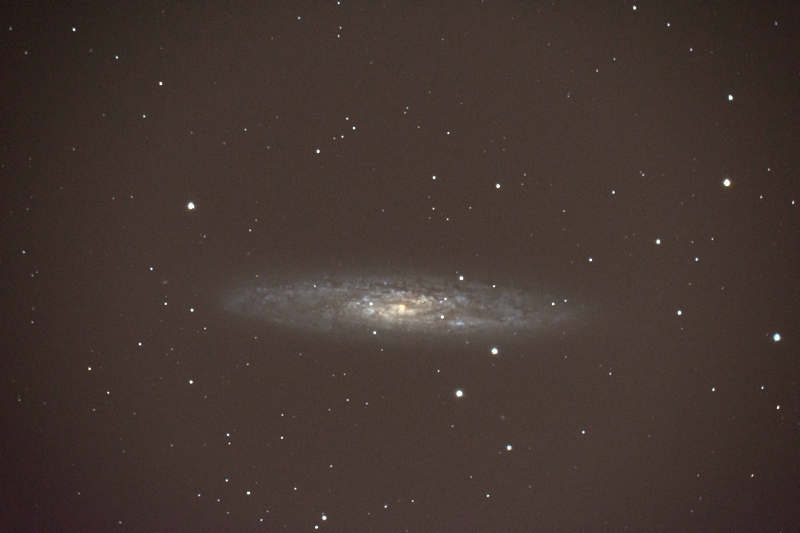
Lynkeos
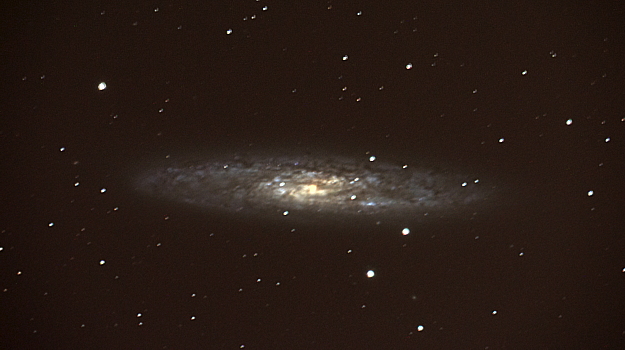
Keith's Image Stacker

Keith's Image Stacker obviously did a better job of stacking the images. But is the stacked image that much better than the 1 minute, ISO 6400, image? Yes, there is slightly less digital noise visible in the stacked image. But there was more post-processing work required to create the stacked image. I will do more tests on other DSOs. NGC253 is fairly bright, so was a relatively easy object to capture at the low ISO 800. Fainter objects may not turn out as well. Will see.
2015 MST: StarLock OFF. Breezes were picking up. Clouds were increasing as well in the southwest and northwest.
Slewed to the star Capella; SYNCed the AutoStar and tweaked the focus. Slewed to IC405 (nebula), StarLock ON, did a couple of framing test images. This is a slightly cropped image of IC405, 2 minutes, ISO 12800, White Balance 4000K:

2037 MST: StarLock OFF. Decided to try for a better image of NGC7662 (Blue Snowball, planetary nebula). I wasn't happy with the image I captured on the previous session. But clouds were approaching its location this night so I would have to hurry. Removed the focal reducer, slewed to the star Deneb, SYNCed, and focused. Did several short exposures. This image (cropped) is 30 seconds, ISO 1000, White Balance 4000K:
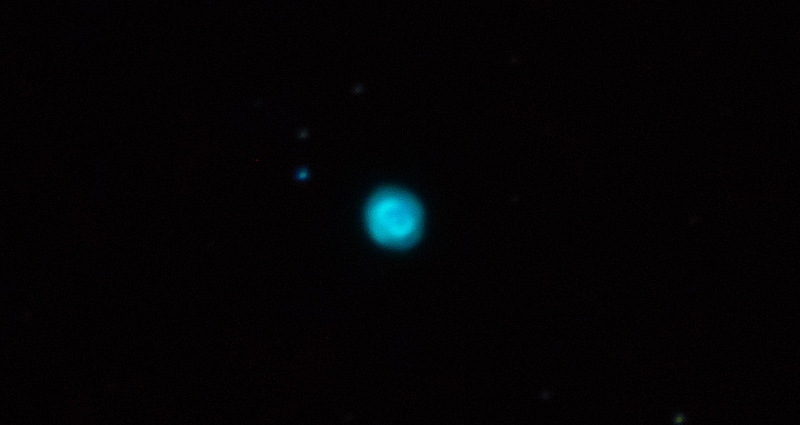
2101 MST: StarLock OFF. Ended imaging due to the clouds. Slewed to the star Fomalhaut and SYNCed the AutoStar. 2107 MST: LX600 OFF.
|
Close: Wednesday, 23 November 2016, 2122 MST Temperature: 53°F |
Session Length: 3h 13m Conditions: Partly cloudy, breezy |
Comments are welcome using Email. Twitter users can use the button below to tweet this report to your followers. Thanks.
Cassiopeia Observatory Home Page
Copyright ©2016 Michael L. Weasner / mweasner@me.com
URL = http://www.weasner.com/co/Reports/2016/11/24/index.html
